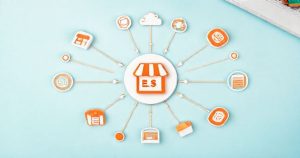Discover the power of Etsy integrations to streamline your business operations. This guide explores essential tools for print-on-demand, marketing, shipping, and accounting. Learn how connecting third-party applications can save you valuable time, reduce manual errors, and help you scale your Etsy shop effectively. Move beyond manual tasks and unlock your store’s full potential by leveraging the right automation solutions for sustainable growth and increased profitability.
Why Etsy Integrations Are Essential For Growth
Running a successful Etsy shop involves more than just creating great products. It requires managing listings, marketing, customer service, shipping, and finances. As your business grows, these manual tasks can become overwhelming, limiting your ability to focus on creativity and strategy. This is where Etsy integrations become a game-changer. By connecting your shop with specialized third-party applications, you can automate repetitive processes, gain valuable insights, and deliver a superior customer experience that fosters loyalty and repeat business.
Think of Etsy integrations as a team of digital assistants working for you around the clock. They handle the time-consuming work, allowing you to concentrate on what truly matters: designing new products, refining your brand, and engaging with your community. From automatically syncing orders with a print-on-demand provider to streamlining your accounting, these tools are not just a convenience; they are a strategic necessity for any seller serious about scaling their operations and maximizing profitability in a competitive marketplace.
Key Integration Categories For Etsy Sellers
To effectively leverage automation, it’s crucial to understand the different types of Etsy integrations available and how they address specific business needs. Each category offers a unique set of tools designed to solve common challenges faced by sellers. By identifying your biggest pain points, you can strategically choose the integrations that will provide the most significant return on your investment, whether that return is measured in time saved, sales increased, or operational efficiency gained.
Print-on-Demand (POD) Services
For sellers in the apparel, home decor, and accessories niches, print-on-demand (POD) integrations are revolutionary. Services like Printful and Printify connect directly to your Etsy shop, automating the entire fulfillment process. When a customer places an order for a t-shirt or a custom mug, the order information is sent directly to the POD provider. They print, package, and ship the product directly to your customer under your brand, meaning you never have to hold physical inventory or manage shipping logistics for those items.
This model significantly lowers the barrier to entry and reduces financial risk. You can list dozens of designs across various products without any upfront cost. The integration handles everything from product mockups to order fulfillment, freeing you to focus entirely on design and marketing. This is one of the most popular and powerful Etsy integrations for creative entrepreneurs looking to build a scalable business without the complexities of traditional manufacturing and inventory management.
Marketing and SEO Automation
Driving traffic to your Etsy shop is a constant challenge. Marketing and SEO integrations help you optimize your listings for visibility and promote your products across various channels. Tools like Marmalead or eRank, while not direct integrations in the same way as POD services, are essential for keyword research. They help you find the terms buyers are actually using, allowing you to optimize your titles, tags, and descriptions to rank higher in Etsy search results. This data-driven approach is far more effective than guesswork.
Beyond SEO, other tools can integrate with your shop to automate social media marketing. Applications exist that can automatically share your new Etsy listings on platforms like Pinterest or Twitter, keeping your social feeds active and driving traffic back to your store. These marketing-focused Etsy integrations ensure your products are consistently put in front of potential buyers, increasing brand awareness and sales opportunities without requiring constant manual effort on your part.
Shipping and Fulfillment Solutions
For sellers who manage their own inventory and shipping, fulfillment integrations are a lifeline. Platforms like Pirate Ship, ShipStation, or Shippo connect to your Etsy shop and import your orders automatically. This allows you to purchase and print shipping labels in bulk, often at discounted commercial rates that are cheaper than buying postage at the post office. This not only saves money but also dramatically reduces the time spent on preparing packages for shipment.
These tools also automate other crucial steps. Once a label is printed, the integration automatically updates the order status on Etsy and sends the tracking number to the customer. This level of automation minimizes the risk of human error, improves your shop’s efficiency, and provides a professional customer experience. For sellers with a high volume of orders, these Etsy integrations are absolutely essential to maintain sanity and ensure timely, accurate fulfillment.
Accounting and Financial Management
Keeping track of income, fees, and expenses is critical for understanding your shop’s profitability and preparing for tax season. Manually tracking this information in a spreadsheet is tedious and prone to errors. Accounting integrations like QuickBooks Self-Employed or GoDaddy Bookkeeping connect to your Etsy account and your business bank account, automatically importing all sales and expense data. They categorize transactions, calculate estimated taxes, and generate profit and loss statements, giving you a clear, real-time view of your financial health.
Analysis: The Standalone Shop vs. The Integrated Ecosystem
Consider two sellers, both selling handmade jewelry. The first operates a standalone shop, manually managing every aspect. They spend hours each week copying and pasting shipping addresses, updating spreadsheets with sales data, and manually posting new products to social media. Their time is consumed by administrative tasks, leaving little room for creating new designs or developing a marketing strategy. Growth is slow because their processes are not scalable; more orders simply mean more manual work.
The second seller has built an integrated ecosystem. They use a shipping integration to print labels in minutes, an accounting integration that tracks their finances automatically, and a marketing tool to schedule social media posts. The time they save is reinvested into product development and customer engagement. When a new order arrives, a series of automated workflows is triggered. This seller can handle ten times the order volume of the first with less stress and greater accuracy. This comparison highlights that Etsy integrations are not just tools; they are the foundation of a scalable business model.
Unlocking Sustainable Growth Through Smart Automation
Embracing Etsy integrations is about shifting your mindset from being an employee in your business to being its CEO. By automating the repetitive, low-value tasks, you free up your most valuable resource: your time. This allows you to focus on high-impact activities like product innovation, brand building, and strategic planning. The right set of tools can transform your Etsy shop from a time-consuming hobby into an efficient, profitable, and scalable enterprise, positioning you for long-term success in the ever-evolving world of e-commerce.





